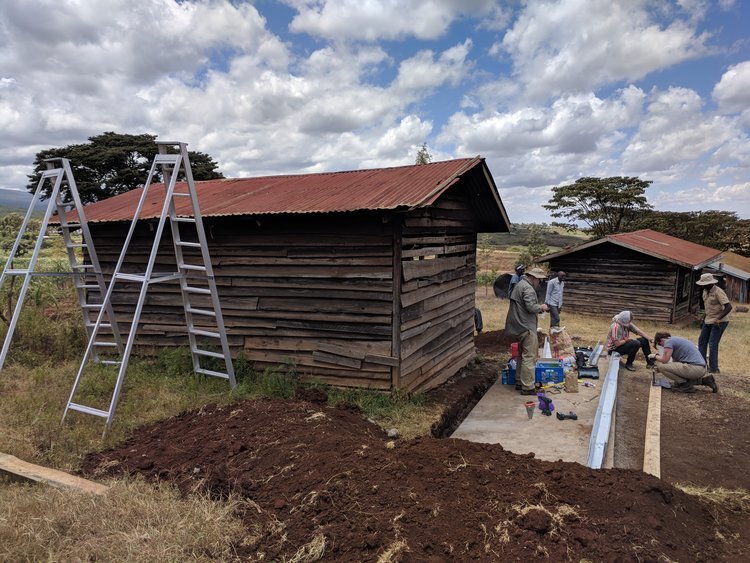
Our Project
Our chapter is currently working on a rainwater harvesting project at Imurtot Primary School.
Background
Imurtot Primary School is located in Kajaido County, Kenya. The student population is currently around 550 students, but the annual student population is variable; enrollment has been as high as 600-800 students over the last 5 years. Before the partnership with EWB, the school did not have a water supply. The students walk to a water source before school and are instructed to bring water to school for drinking and cooking their lunch.
Through observation, it appears that most students bring 1-2 L each day. The location of the water source varies depending on where the student lives, but students may travel up to 5 km before or after school to obtain water (including a borehole well in neighboring Tanzania or from other nearby seasonal surface water sources). The water collected is mainly from surface streams or shallow wells that do not meet the standards for potable water, resulting in poor health within the community.
The goal of the project is to implement a community operated, maintained and managed rainwater catchment system, at the Imurtot Primary School, which eliminates need for the 550 students to collect water during the school year, reduces the occurrence of water-borne illnesses, and provides the WHO-recommended quantity and quality of daily water supply during the school year.
Location
Imurtot Primary School is in Kajaido County, Kenya – near the Tanzanian border . The community consists mainly of Maasai people. Historically, Maasai have been nomadic, moving with livestock throughout the year to available water sources. The livestock are their primary source of income and the basis of most commerce in the area. However, due to extensive land-use changes throughout the region in the last few decades, as well as land subdivision, agricultural/urban development, and polluted water sources, the Maasai have established more permanent settlements.
Design
The proposed solution is to install a rainwater catchment system onto all viable school buildings. The system consists of gutters, downspouts, first flush systems, storage tanks, all related piping and plumbing infrastructure, concrete slab foundations, and lockable enclosures to control water valve access. The community wants healthy and well-hydrated students who have time and energy to focus on their studies. The provision of this system and the means to sustain it will result in improved health and more time for students to study.
Partnership
Our chapter works on our rainwater harvesting project at Imurtot Primary School in partnership with Water Is Life Kenya (WILK). WILK is a local nonprofit organization dedicated to bringing clean, accessible water to communities in Southern Kenya. Imurtot primary school reached out to WILK about their need for a water source at the school, and then partnered with out chapter to design and implement a solution.
Progress
Our team is currently in the implementation phase of the project.

































